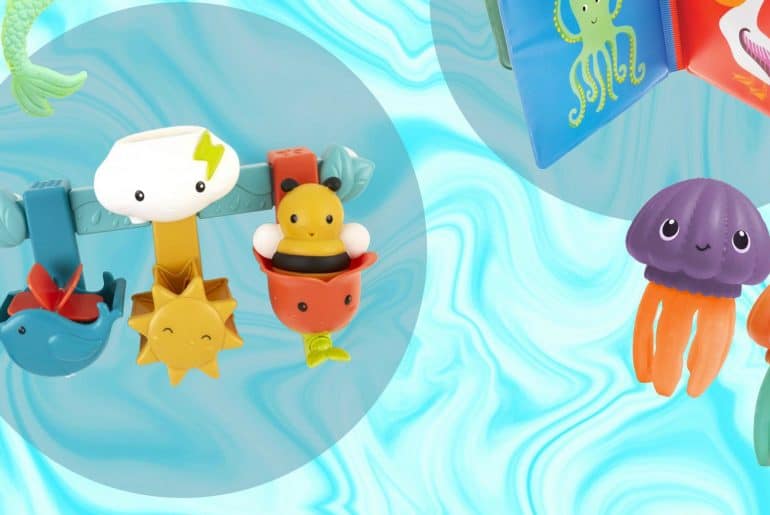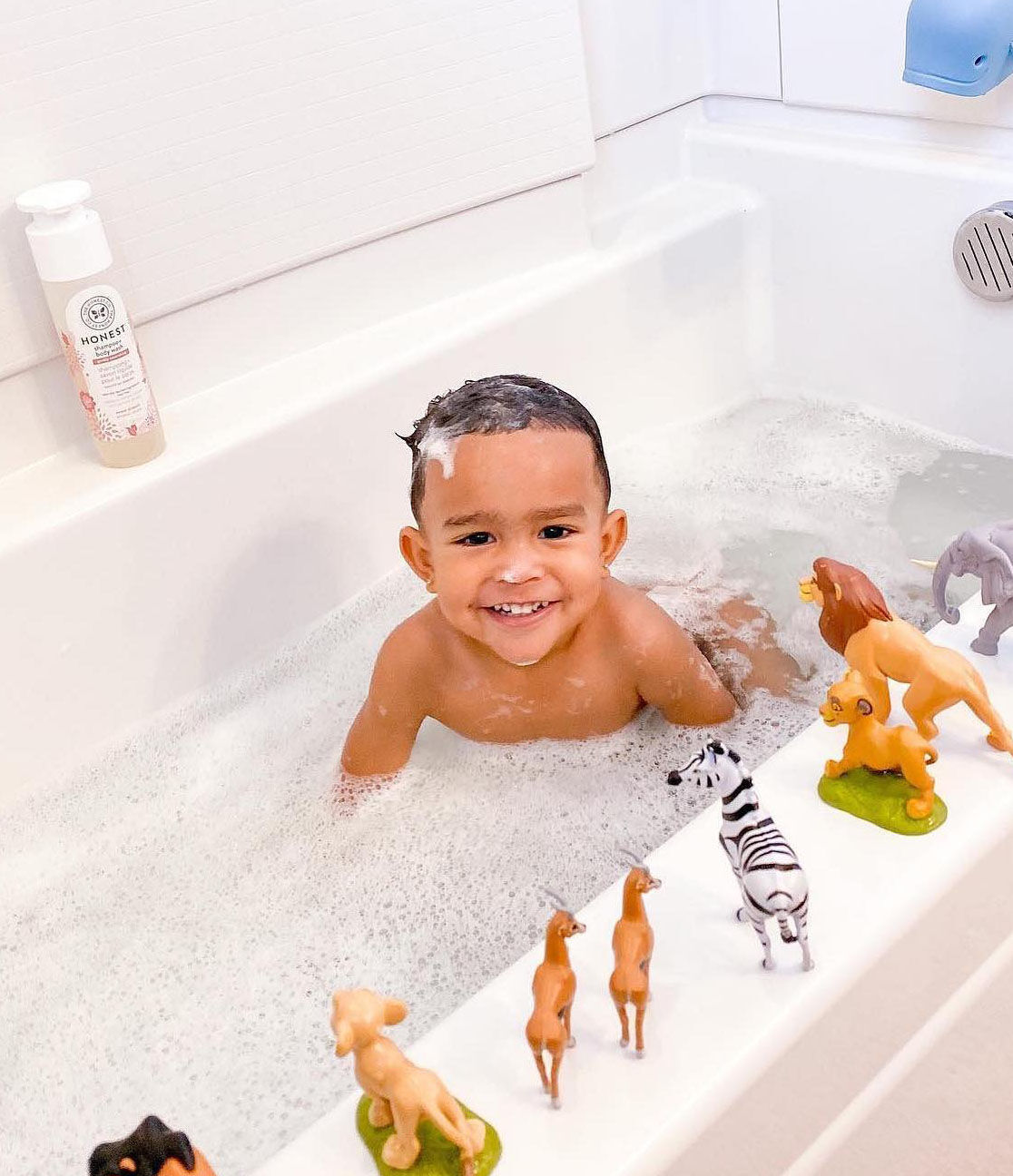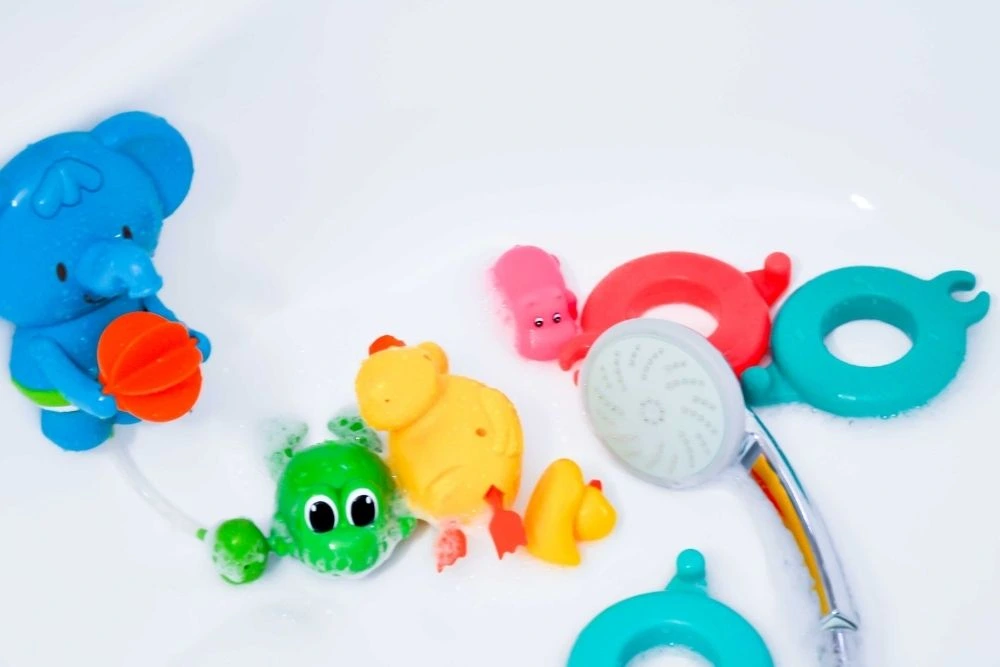I. Introduction
:max_bytes(150000):strip_icc()/how-to-clean-baby-toys-3255899-01-0d3500bc2c1d4599a0ed6b0b6570c830.jpg)
A. The importance of cleanliness and hygiene when it comes to baby bath toys Keeping baby bath toys clean is essential for maintaining the health and safety of your child. Bath toys can harbor bacteria, mold, and mildew if not properly cleaned, posing potential health risks.
B. Introducing the concept of cleaning baby bath toys and its significance in keeping them safe and free from harmful bacteria Regularly cleaning baby bath toys ensures that they remain free from dirt, mold, and harmful bacteria. By following proper cleaning techniques, parents can provide a safe and hygienic environment for their child during bath time.
II. Why Clean Baby Bath Toys?
A. Health and Safety Considerations
- Prevention of Mold and Mildew The warm and humid environment of the bath encourages the growth of mold and mildew on bath toys. Regular cleaning prevents the accumulation of mold and ensures the toys are safe for your child.
- Avoiding the Spread of Bacteria and Viruses Bath toys come into contact with soap scum, dirt, and other contaminants during bath time. Proper cleaning helps remove bacteria and viruses that may be present on the toys, reducing the risk of spreading illnesses.
B. Prolonging the Lifespan of the Toys

- Preserving the Quality and Durability Regular cleaning prevents the degradation of bath toys, helping them retain their quality and durability over time. By removing dirt and residue, the toys can maintain their functionality and appearance.
- Minimizing the Risk of Wear and Tear Accumulated dirt and debris can cause premature wear and tear on bath toys. Regular cleaning removes these particles, prolonging the lifespan of the toys and ensuring they continue to provide joy during bath time.
III. Proper Cleaning Methods for Baby Bath Toys
A. Regular Cleaning Routine
- Clearing Accumulated Water After each bath, drain any water from squeeze toys or toys with openings to prevent the growth of mold and mildew. Squeeze out any water from the toys to ensure they are properly drained.
- Rinsing After Each Use Rinse bath toys thoroughly with clean water after each bath to remove any soap residue or dirt. This simple step helps maintain the cleanliness and hygiene of the toys.
B. Cleaning Solutions and Techniques

- Using Warm Soapy Water Submerge the toys in warm soapy water and gently scrub them using a sponge or soft brush. Pay extra attention to areas that may collect dirt or soap scum. Rinse the toys thoroughly to remove any soap residue.
- Disinfecting with Vinegar or Bleach Solutions For a more thorough clean, you can use vinegar or bleach solutions to disinfect the bath toys. Dilute either white vinegar or bleach in water and soak the toys for a few minutes. Rinse thoroughly with clean water afterward.
C. Special Considerations for Different Types of Bath Toys
- Squeeze Toys Squeeze toys with openings require extra attention. Ensure that water is completely squeezed out after each use and clean them regularly to prevent mold from growing inside.
- Rubber Ducks or Similar Floaters To clean floaters like rubber ducks, squeeze out any water and wipe the surface with warm soapy water. Rinse thoroughly and allow them to dry completely.
-
Soft Bath Toys For soft bath toys, check the manufacturer’s instructions for cleaning recommendations. Some soft toys may be machine washable, while others require hand washing. Follow the instructions and let them air dry completely.
IV. Drying and Storage Practices

A. Thorough Drying
- Air Drying After cleaning the baby bath toys, allow them to air dry completely before storing them. This ensures that all moisture is evaporated and reduces the risk of mold or mildew growth. Place the toys in a well-ventilated area, such as a drying rack or an open space, and let them air dry naturally.
- Towel Drying For a quicker drying process, use a clean towel to dry the toys after cleaning. Gently wipe down each toy, paying attention to any crevices or hard-to-reach areas where water may have accumulated. Ensure that the toys are completely dry before storing them to prevent moisture-related issues.
B. Proper Storage
- Avoiding Moisture Build-Up When storing baby bath toys, it is important to keep them in a dry environment to prevent moisture build-up. Store the toys in a clean and well-ventilated area, away from direct sunlight or areas prone to dampness. Avoid storing damp toys in sealed containers or plastic bags, as this can create a humid environment that promotes mold and mildew growth.
- Minimizing Contact with Other Toys To prevent cross-contamination and the spread of bacteria or germs, keep the baby bath toys separate from other toys. Store them in a designated container or bag specifically for bath toys. This helps maintain the cleanliness of the toys and prevents the transfer of dirt or germs from other toys.
V. Additional Tips for Clean Bath Time
![How to Clean and Disinfect Baby Bath Toys? [8 Easy Ways] - Baby and ...](https://babyandproducts.com/wp-content/uploads/2022/02/How-To-Clean-And-Disinfect-Baby-Bath-Toys-1536x633.jpg)
A. Regular Inspections Regularly inspect the baby bath toys for any signs of damage, wear, or mold growth. Check the toys for loose parts, cracks, or signs of deterioration. Discard any toys that are damaged beyond repair or have mold growth that cannot be properly cleaned.
B. Rotating Toys To prevent excessive wear and tear on specific toys, consider rotating them during bath time. This allows each toy to have a chance to dry thoroughly between uses and extends the lifespan of the toys. It also keeps bath time interesting for the child, as they have access to a variety of toys during different bathing sessions.
C. Replacement Guidelines As with any toys, baby bath toys have a limited lifespan due to wear, tear, and deterioration. Follow the manufacturer’s guidelines for replacing the toys, which can often be found on the packaging or instruction manual. If a toy becomes damaged, shows signs of mold growth that cannot be cleaned properly, or is beyond its recommended usage period, it is best to discard and replace it with a new one.
VI. Conclusion
In conclusion, proper drying and storage practices are essential for maintaining the cleanliness and quality of baby bath toys. Thoroughly drying the toys after each use helps prevent mold and mildew growth, while proper storage in a dry environment minimizes the chances of moisture-related issues. Regular inspections, toy rotation, and following the manufacturer’s replacement guidelines are additional tips for maintaining clean bath time. By implementing these practices, parents and caregivers can ensure that their baby’s bath toys remain safe, hygienic, and enjoyable for every bath time experience.
